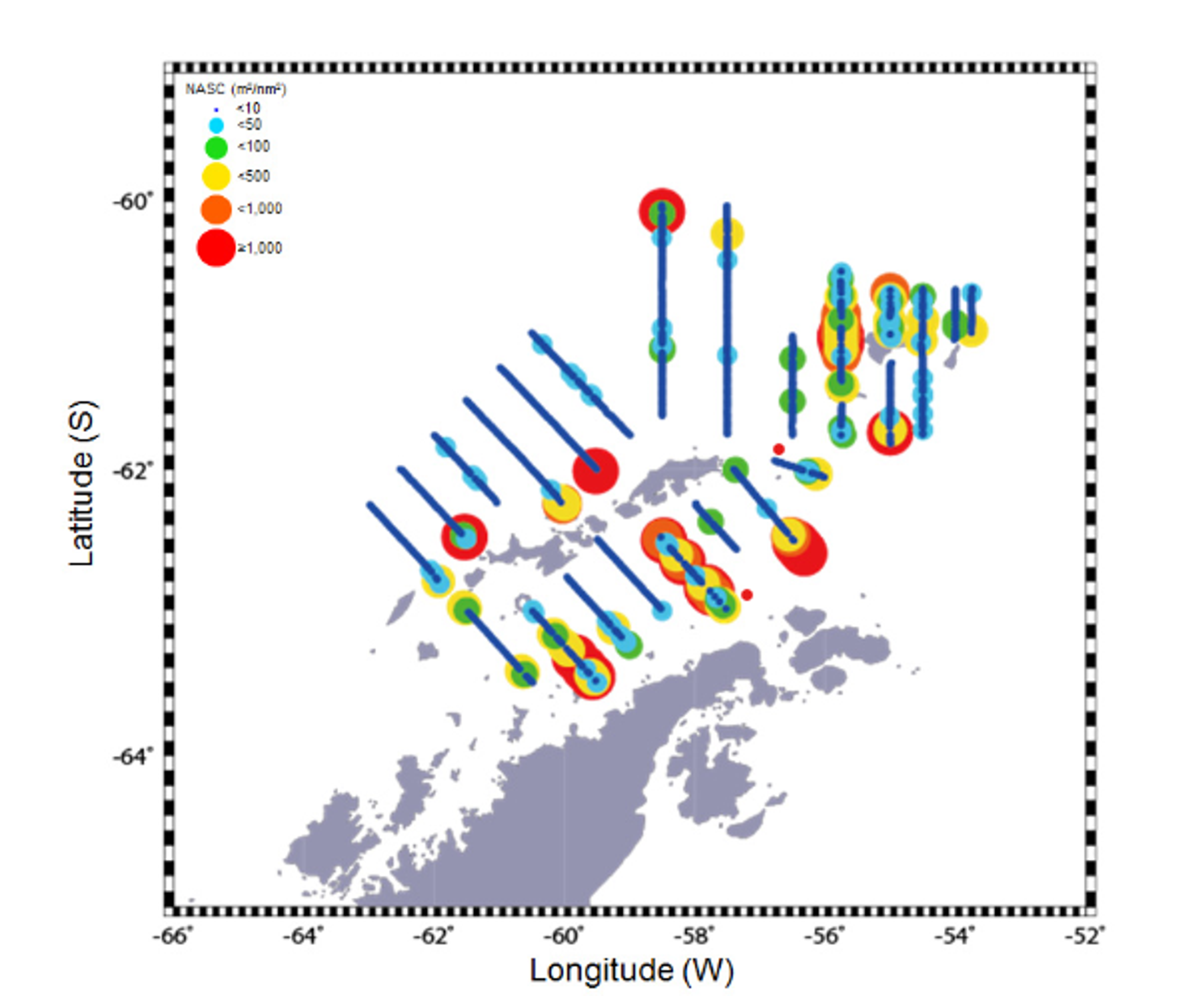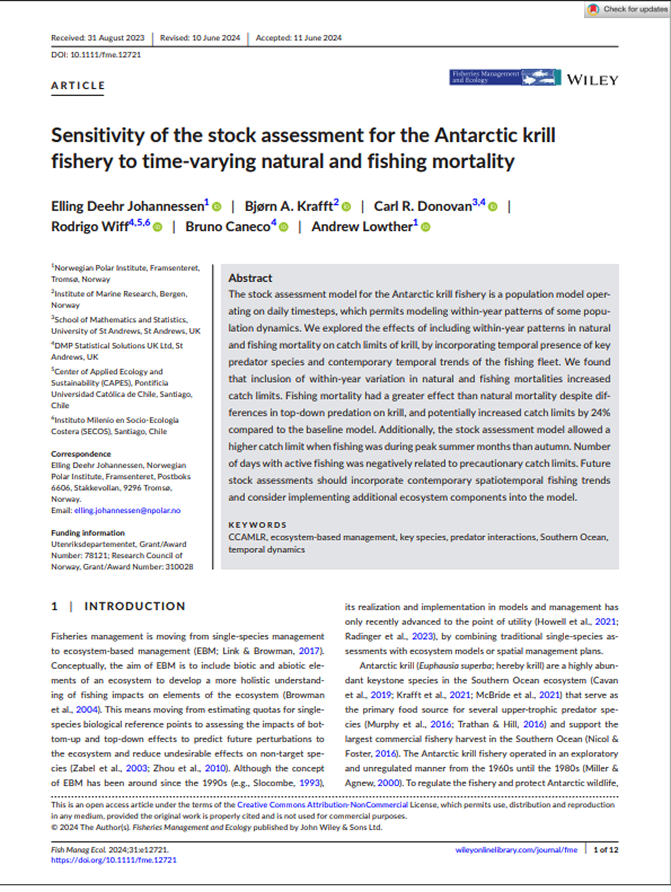Antarctic ecosystem
Fisheries management
Biomass
Krill (Euphausia superba)
Density Estimation of Antarctic Krill in the South Shetland Island (Subarea 48.1) Using dB-Difference Method
Summary
Researchers measured Antarctic krill populations in the waters around South Shetland Islands using sound-based technology (acoustic dB-difference methodology) in April 2016. They found an average krill density of 33.65 grams per square meter across the 90,700 square kilometer study area, though this varied considerably (45.97% coefficient of variation) from place to place. The heaviest concentrations of krill were found near South Island and Elephant Island at depths around 200 meters. This study shows that acoustic technology can effectively survey large ocean areas quickly to measure krill populations, providing valuable data to support CCAMLR's sustainable fisheries management in Subarea 48.1.

1
Geographic location and timing of Antarctic krill populations detected through acoustic analysis comparing sound reflections (minimum volume backscattering strength, Sv) between 120 kHz and 38 kHz sonar frequencies. Krill create a distinctive acoustic signature when the backscattering difference ranges from 0.4 to 14.3 decibels (∆MVBS120-38 kHz), which distinguishes them from other marine life.Key Findings
1
Average krill population density: 33.65 grams per square meter, with high variation (45.97% coefficient of variation) across different areas 2
Krill body size: Ranged from 25-60 millimeters in length, with most averaging 45.5 mm (± 6.9 mm standard deviation) 3
Geographic distribution: Krill populations were most concentrated in waters near South Shetland Islands and Elephant Island 4
Depth preference: Krill reached their highest densities at approximately 200 meters below the surface 5
Acoustic detection accuracy: The sound-based method (dB-difference range of 0.4-14.3 dB) successfully identified krill populations 6
Species confirmation: Nearly all net catches (99.9%) contained Antarctic krill, with only one sampling station showing different species

